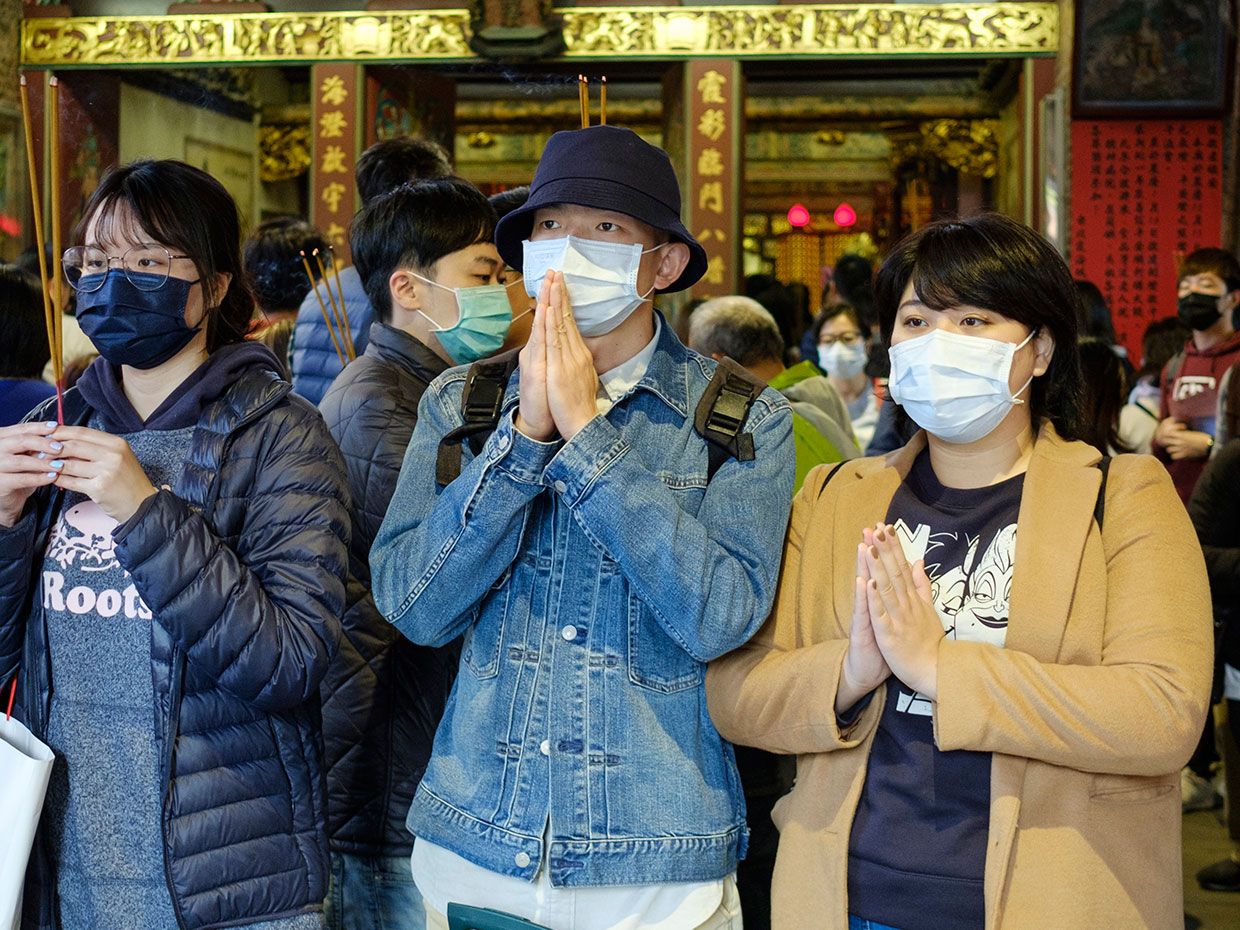Big Data Helps Taiwan Fight Coronavirus
How Taiwan used big data, new technologies and heavy handed government to control the spread of the coronavirus

In late January, as the novel coronavirus began spreading through China, computer scientists modeling the outbreak ranked Taiwan the region with the second highest risk of importation of the virus. The island sits just 130 km off the coast of mainland China and shuttles thousands of passengers to and from the mainland daily.
But so far Taiwan reports that it has largely mitigated the spread of the pathogen. Fewer than 50 cases of the coronavirus, which causes the disease COVID-19, had been confirmed on the island as of March 11. South Korea, by contrast, had confirmed nearly 8,000 cases.
Taiwan owes its success largely to the emergency implementation of big data analytics and new technologies, according to a recent report in the Journal of the American Medical Association (JAMA)authored by individuals in California and Taipei.
Taiwan officials from the beginning of the viral outbreak “did a very detailed mapping of who got it from whom,” and were able to stop a lot of transmission early, says Chih-Hung Jason Wang, director of the Center for Policy, Outcomes and Prevention at Stanford University, who co-authored the opinion article.
Notably, officials integrated Taiwan’s national health insurance database with its immigration and customs database. This enabled the government to track the 14-day travel histories and symptoms of its citizens, nearly all of whom have an identifying national health insurance (NHI) card. All hospitals, clinics and pharmacies were given access to this information for each patient.
Taiwan restricted entry for foreign travelers from the most affected regions, and for those allowed entry, officials tracked them with mobile technologies. Foreign visitors are asked to scan a QR code that takes them to an online health declaration form where they provide contact information and symptoms. People placed under quarantine are given government-issued mobile phones and monitored with calls and visits.
“They incentivized people to be truthful” on their health declaration forms, says Wang. “If you are placed in the high risk group, the government will help you get care. If you get sick by yourself, you’ll have to wander around the hospital trying to get help.”
Taiwan also relied on old-fashioned face-to-face check-ins. Households were grouped into wards, or sections, and a chief was named for each ward. “So [authorities] will say to the chief, ‘There’s a person under quarantine in your ward, why don’t you go check on them and bring them some food,’” says Wang. “In an epidemic, you have to be nice to people, otherwise they’ll hide their symptoms.”
To manage resources, Taiwanese officials used IT to estimate the region’s supply of masks, negative pressure isolation rooms, and other health provisions. They set price limits on masks and rationed them using individuals’ NHI cards and an online ordering mechanism. Soldiers were sent to work at mask factories to ramp up production.
Overseeing all the action is the National Health Command Center. “They set that up in a compound on the seventh floor of Taiwan’s Centers for Disease Control,” says Wang. “There are data analysts in there and reporters; it can host up to a hundred people 24/7.”
These actions are part of Taiwan’s emergency epidemic response plan, which it devised after the 2003 SARS outbreak in China. Under Taiwan’s Communicable Disease Control Act, in the event of a crisis, officials can activate the plan, giving the government powers it wouldn’t normally have.
Taiwanese officials activated the emergency plan January 20 and since then have implemented over 124 action items, according to the JAMA report.
Penalties for noncompliance with the temporary orders are steep. Profiteering off prevention products like masks, or spreading false information about COVID-19 can bring a penalty of years in jail and fines over a hundred thousand US dollars. One couple was fined USD $10,000 for breaking a 14-day quarantine rule. Three Hong Kong visitors who “disappeared for a week” were tracked down, fined USD $2,350 each, and transferred to designated quarters for medical isolation, according to the JAMA report.
Taiwan’s heavy-handed government actions might not go over well in a country such as the United States. But Wang says the measures, so far, have been well received in Taiwan, in part because they were planned ahead and implemented on a temporary basis.
He and his coauthors write that it is unclear “whether the intensive nature of these policies can be maintained until the end of the epidemic and continue to be well-received by the public.”
Taiwan’s emergency measures have probably not halted community-based transmission of COVID-19. Like the rest of the world, the number of officially confirmed cases in Taiwan is likely far fewer than the true number on the ground, since there are people who have the disease and don’t know it, or have such mild symptoms that they don’t seek care or get tested. “It’s impossible not to have more cases,” says Wang.
About the Human OS blog
IEEE Spectrum’s biomedical engineering blog, featuring the wearable sensors, big data analytics, and implanted devices that enable new ventures in personalized medicine.
- Eliza Strickland, Editor
- Emily Waltz, Contributor
- Megan Scudellari, Contributor



No comments:
Post a Comment